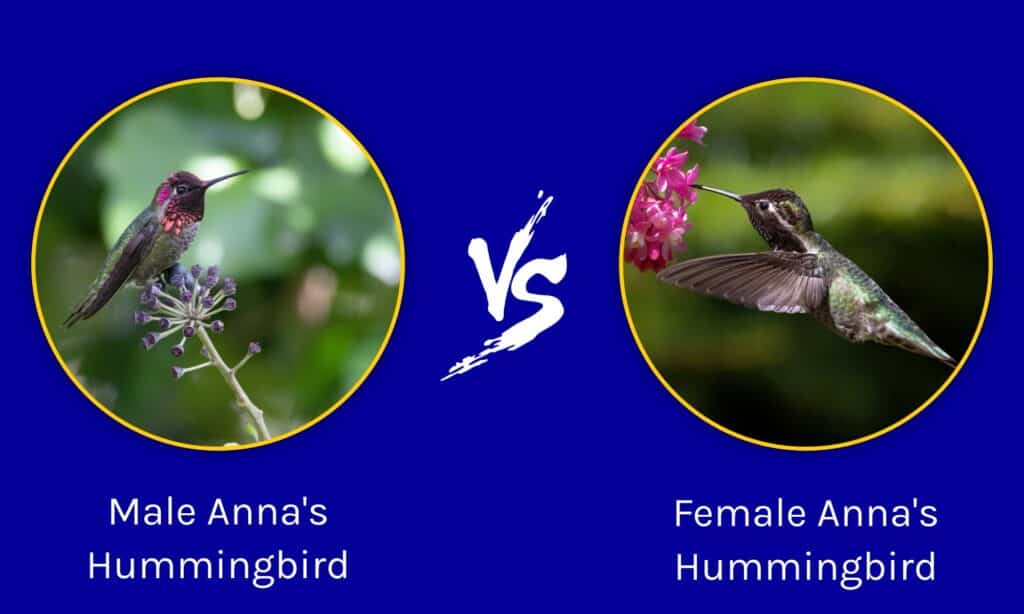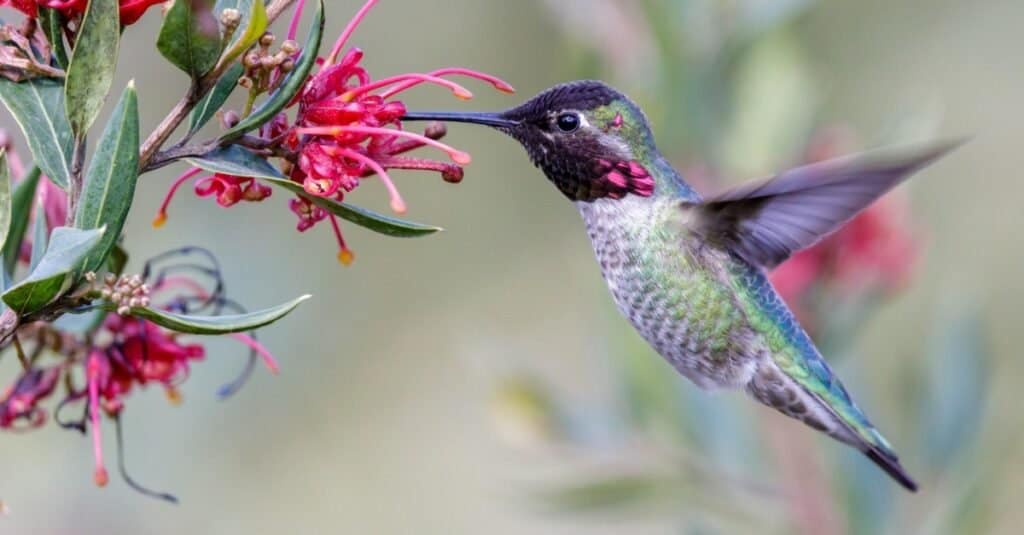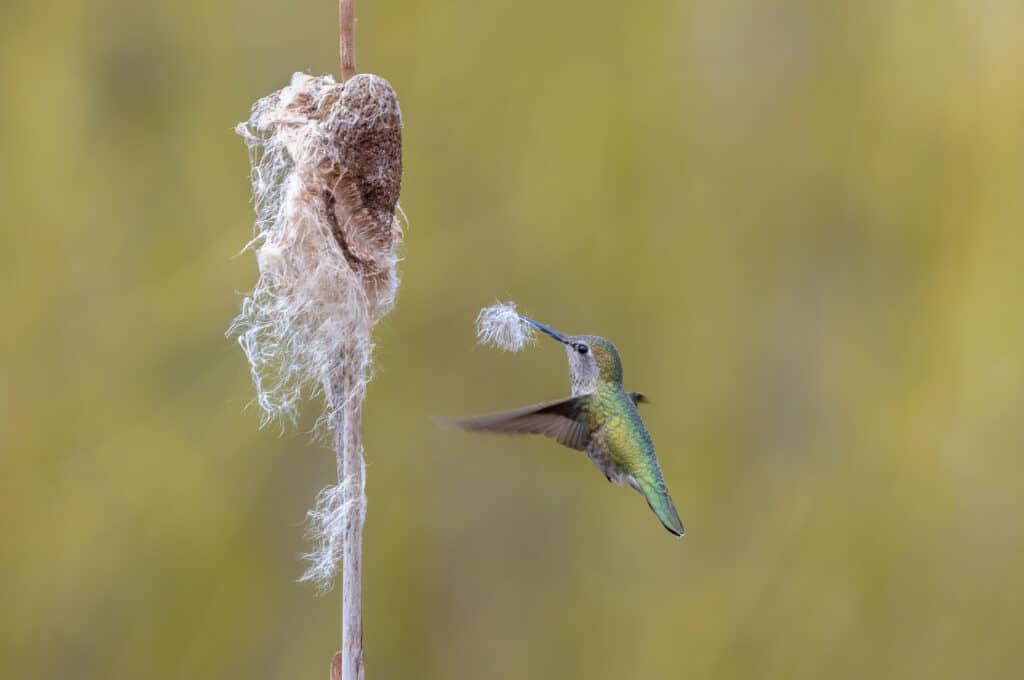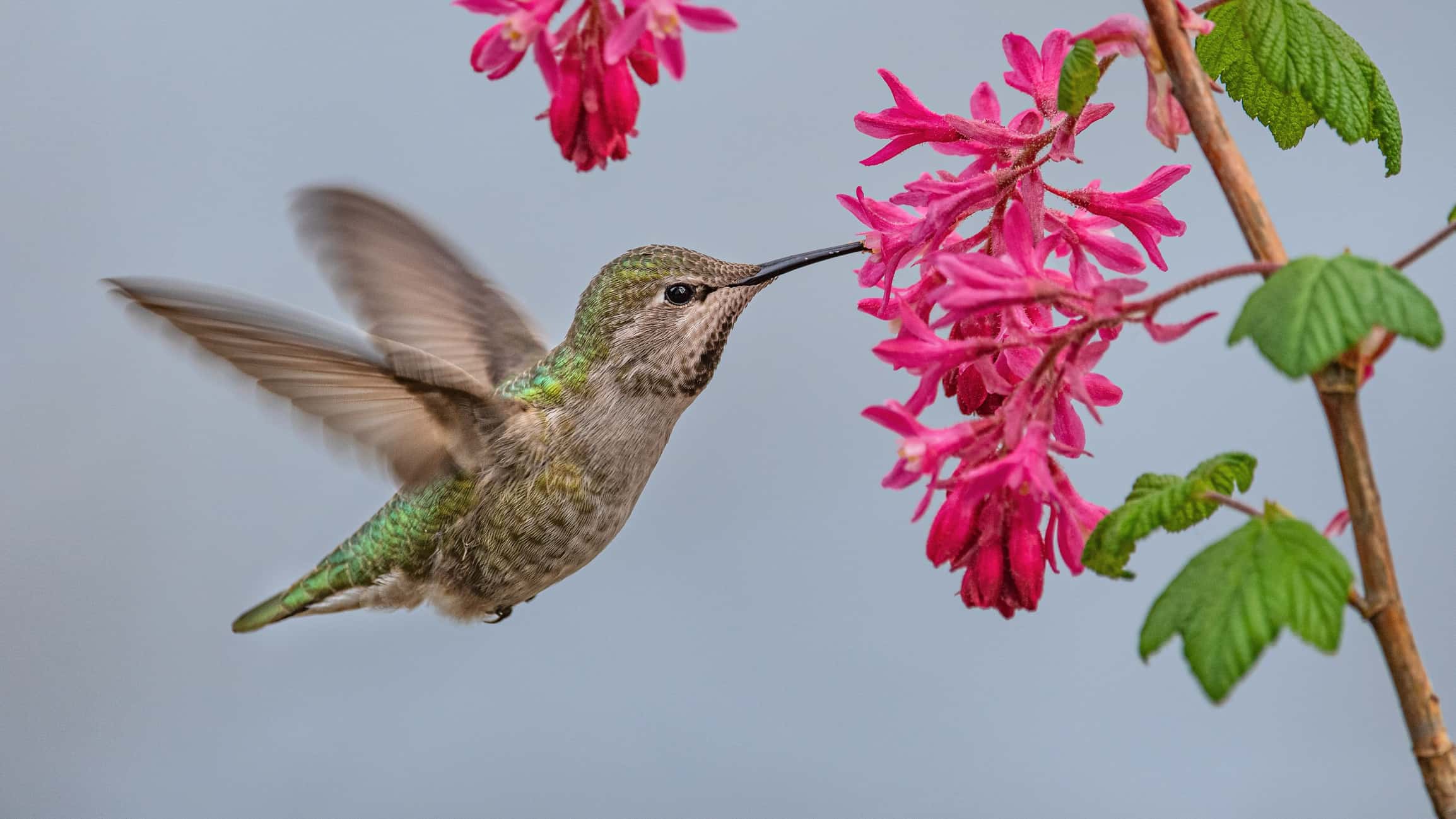Native to the North American West coast, Anna’s hummingbirds can now be found from Northern Mexico, through California, Oregon, and Washington, and up into British Columbia. In these areas, this little beauty can commonly be spotted in backyards feeding on flowering plants and nectar feeders. Anna’s hummingbirds are uniquely identified by their brilliant red plumage that positively sparkles when it catches the sunlight, but do both genders share this trait? We’ll discuss how to identify male vs female Anna’s hummingbirds at a glance, along with behavioral traits that set them apart.
Comparing a Male Anna’s Hummingbird and a Female Anna’s Hummingbird

| Male Anna’s Hummingbird | Female Anna’s Hummingbird | |
|---|---|---|
| Size | 3.9 – 4.3 in long, 4.7 – 5.25 in wingspan, 0.1 to 0.2 oz weight, longer tails, and slightly heavier than females on average. | 3.9 – 4.3 in long, 4.7 – 5.25 in wingspan, 0.1 to 0.2 oz weight, slightly longer bills and wingspans than males on average. |
| Morphology | Prominent iridescent reddish crown and gorget plumage. | Green back plumage with gray undersides. Small gorget of reddish plumage. |
| Behavior | Defensive of territory and feeding grounds. Perform aerial display dives for defense and courtship. | Defensive of feeding grounds before nesting. Constructs nest and rears her young all on her own. |
| Vocalization | Sing elaborate learned songs that last 10 seconds in duration. | Produce tzip or ‘chip’ call, also twittering or chattering calls |
Key Differences Between a Male and Female Anna’s Hummingbird
Male Anna’s hummingbirds are simple to tell from females by their prominent iridescent reddish crown and gorget. Females have a much smaller red gorget and are less conspicuous with subdued coloration, fewer vocalizations, and less display activity. If you spot a nest, you can be sure it’s a female Anna’s hummingbird since they are the ones who rear the young.
The differences are explained in detail below.
Male vs Female Anna’s Hummingbird: Size
Female and male Anna’s hummingbirds are similar in size. On average, females have slightly longer bills and wings on average. Males tend to have longer tails and be a bit heavier than females. The differences are slight, so they are not helpful for field identification. Other features set males and females apart more than their size.
Male vs Female Anna’s Hummingbird: Morphology

Male Anna’s hummingbirds are distinguished by their prominent, iridescent reddish crown and gorget plumage.
©iStock.com/yhelfman
The male Anna’s Hummingbird has a sparkling rose-pink crown and gorget, or throat, which are strongly iridescent. The iridescence is dependent on the angle from which the male is viewed by females or male competitors. The changing coloration of the head and throat of the male Anna’s hummingbird occurs with the changing angle of light and offers an advantage for courtship and territory defense.
Female Anna’s hummingbirds look similar but are less conspicuous than the males. They have metallic green plumage on their backs and up to their nape and crown. Their undersides are light gray. While they don’t have the extensive colorful gorget and head plumage of the males, the female Anna’s often have a tiny red gorget. This colorful throat plumage can vary in color depending on the angle of the light. Females of most hummingbird species do not have this feature.
Male vs Female Anna’s Hummingbird: Behavior

Female Anna’s hummingbirds collect the nesting material for constructing their nests.
©Devonyu /Shutterstock.com
Males are prepared to defend their territories and food sources. During the breeding season, males perform impressive aerial courtship dives. When a female flies into the male’s territory he will dive over the female in a J-shaped pattern.
He will first hover 6 to 13 in front of the female he is performing the display for. He then rises up to 131 feet before plummeting in a near-vertical dive at high speed. The display ends with an explosive squeak audible from the tail feathers. He will then make a circular arc back to the starting point. The dives are oriented so that the sun reflects from the iridescent crown and throat directly toward the intended recipient of the display.
Females are typically less territorial than males but they will actively defend their nesting territories. Some will also defend feeding territories, such as flowering plants or hummingbird feeders, but generally only before nesting. Females fly into male territories looking to elicit the display response from a prospective mate.
After a successful mating, female Anna’s hummingbirds raise their young without any assistance from the males. They build a round, little cup-shaped nest of plant fibers, feathers, and animal hair that is camouflaged with lichen and other plant materials and bound together by spider silk. She incubates the eggs in the nest at her carefully chosen nest site, then hatches and feeds the baby hummingbirds on her own.
Male vs Female Anna’s Hummingbird: Vocalization
The male Anna’s hummingbird sings a thin and squeaky song with intermittent buzzes and chirps during courtship. This courtship song lasts up to 10 seconds in duration. These long, learned songs are remarkable in male Anna’s hummingbirds.
Females do not sing complex songs like males, but they do produce other sounds. They make a tzip or ‘chip’ call that is also sometimes lengthened to a twittering or chattering call. These calls tend to be heard when the bird is somehow agitated.
Thank you for reading! Have some feedback for us? Contact the AZ Animals editorial team.








